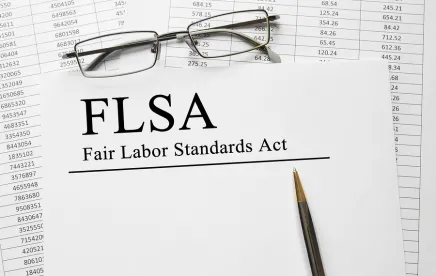On April 1, 2019, the Department of Labor (DOL) announced that it will publish a notice of proposed rulemaking (NPRM) to amend its existing regulations regarding joint employment under the Fair Labor Standards Act (FLSA). This is no April Fools’ Day joke, as a joint employer is jointly and severally liable with the employer for all wages due to the employee under the FLSA. As expected, the NPRM aims to provide stakeholders with clear, bright line rules regarding the circumstances in which an employer may be deemed a joint employer of another company’s employees. This is the first meaningful proposed revisions to the FLSA’s joint-employer regulation since it was originally promulgated in 1958.
The Joint-Employer Saga
Joint employment has been one of the hottest political and policy issues over the last several years, spanning multiple administrations and Congresses. In 2015, the National Labor Relations Board issued its decision in Browning-Ferris Industries of California, Inc. d/b/a BFI Newby Island Recyclery, which replaced the “direct and immediate” joint-employer standard under the National Labor Relations Act (NLRA) with an ambiguous test that could find joint-employer status based on indirect or reserved control of employees. This standard was approved by the U.S. Court of Appeals for the District of Columbia Circuit (sort of), but the case was remanded to the Board, which has also proposed its own joint-employer rule.
Meanwhile, following the NLRB’s lead, in early 2016 the DOL issued an Administrator’s Interpretation (AI) on joint employment under the Fair Labor Standards Act (FLSA) and Migrant and Seasonal Agricultural Worker Protection Act (MSPA). The DOL rescinded the AI in June 2017—just weeks after newly-installed Secretary of Labor Alexander Acosta took the helm at the DOL. Throughout this time, Congress has held multiple hearings on the joint=employer issue and the House of Representatives even passed legislation in 2017 to help clarify the matter.
Now, with the Board expected to clarify joint-employment status under the NLRA with a final rule sometime this year, the DOL has issued this NPRM because “it would be helpful to clarify the standard for joint employer status in order to give the public more meaningful guidance and proper notice of what the [FLSA joint employer] regulation actually requires.”
Four-Factor Test
The DOL proposes a four-part balancing test that would assess whether the potential joint employer:
-
hires or fires the employee;
-
supervises and controls the employee’s work schedule or conditions of employment;
-
determines the employee’s rate and method of payment; and
-
maintains the employee’s employment records.
The NPRM makes clear that “[o]nly actions taken with respect to the employee’s terms and conditions of employment, rather than the theoretical ability to do so under a contract, are relevant to joint employer status under the Act.” (Emphasis added.) Further, the proposal also expressly details that certain business models (e.g., franchises), certain business practices (e.g., allowing an employer to operate a facility on premises), and certain business agreements (e.g., requiring vendors to institute sexual harassment policies), do not make a finding of joint-employer status more or less likely. Finally, the proposal also provides illustrative hypotheticals to help explain how the proposed joint-employer regulation would apply to a variety of business scenarios.
Takeaways for Employers
The issuance of the proposal is certainly welcome news for the employer community. However, employers should bear in mind several important aspects of this development:
-
Remember that this is just a proposal. There may be many twists and turns—and legal challenges—before we have a final rule (if at all).
-
This NPRM is limited to joint employment under the FLSA and does not address joint employment under other federal or state statutes.
Comments on the proposal will be due 60 days from its publication in the Federal Register.



 />i
/>i

